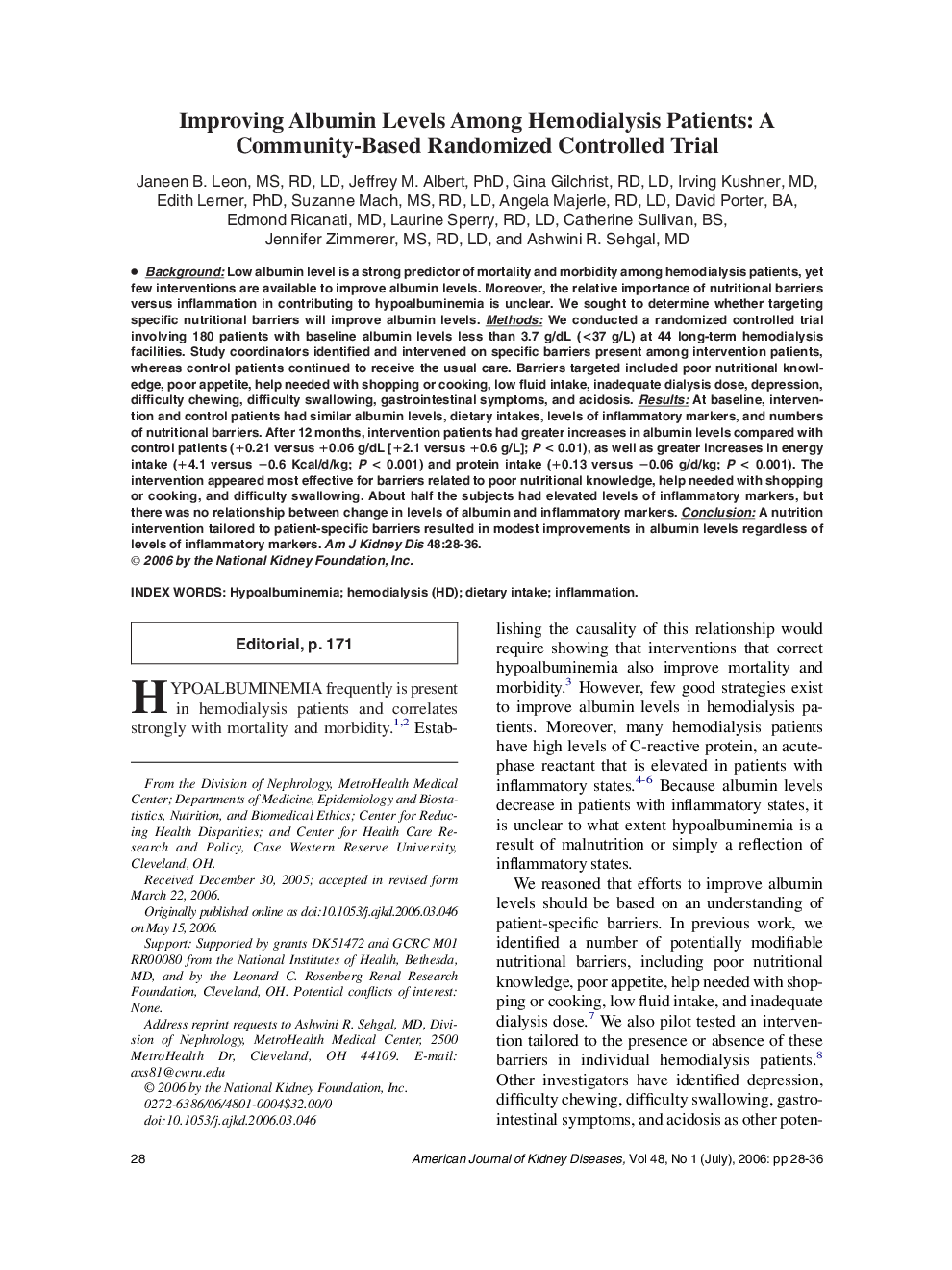| Article ID | Journal | Published Year | Pages | File Type |
|---|---|---|---|---|
| 3852678 | American Journal of Kidney Diseases | 2006 | 9 Pages |
Abstract
Background: Low albumin level is a strong predictor of mortality and morbidity among hemodialysis patients, yet few interventions are available to improve albumin levels. Moreover, the relative importance of nutritional barriers versus inflammation in contributing to hypoalbuminemia is unclear. We sought to determine whether targeting specific nutritional barriers will improve albumin levels. Methods: We conducted a randomized controlled trial involving 180 patients with baseline albumin levels less than 3.7 g/dL (<37 g/L) at 44 long-term hemodialysis facilities. Study coordinators identified and intervened on specific barriers present among intervention patients, whereas control patients continued to receive the usual care. Barriers targeted included poor nutritional knowledge, poor appetite, help needed with shopping or cooking, low fluid intake, inadequate dialysis dose, depression, difficulty chewing, difficulty swallowing, gastrointestinal symptoms, and acidosis. Results: At baseline, intervention and control patients had similar albumin levels, dietary intakes, levels of inflammatory markers, and numbers of nutritional barriers. After 12 months, intervention patients had greater increases in albumin levels compared with control patients (+0.21 versus +0.06 g/dL [+2.1 versus +0.6 g/L]; P < 0.01), as well as greater increases in energy intake (+4.1 versus â0.6 Kcal/d/kg; P < 0.001) and protein intake (+0.13 versus â0.06 g/d/kg; P < 0.001). The intervention appeared most effective for barriers related to poor nutritional knowledge, help needed with shopping or cooking, and difficulty swallowing. About half the subjects had elevated levels of inflammatory markers, but there was no relationship between change in levels of albumin and inflammatory markers. Conclusion: A nutrition intervention tailored to patient-specific barriers resulted in modest improvements in albumin levels regardless of levels of inflammatory markers.
Related Topics
Health Sciences
Medicine and Dentistry
Nephrology
Authors
Janeen B. MS, RD, LD, Jeffrey M. PhD, Gina RD, LD, Irving MD, Edith PhD, Suzanne MS, RD, LD, Angela RD, LD, David BA, Edmond MD, Laurine RD, LD, Catherine BS, Jennifer MS, RD, LD, Ashwini R. MD,
